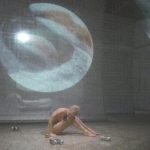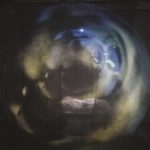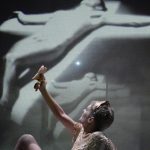
Flowers like stars?
International Women's Day
Per l’intera giornata dell’8 marzo sarà disponibile alla visione l’opera performativa dedicata a Fenix, daughter of the King of Morocco The constant prince (1636) by Calderón de la Barca [+]
Prima parte del trittico The Imminent Past a partire dalle opere di Calderón de la Barca
The hieroglyphic verses of Fenix, daughter of the King of Morocco The constant prince (1636) by Calderón de la Barca, constitute the subtle dramaturgical and conceptual filaments of Flowers like stars?, the new performative creation directed by Maria Federica Maestri and Francesco Pititto. To interpret the existential fever, psychotic euphoria, the self-destructive will of young Fenix – anticipatory figure/sister of the black angels of Jean Genet and Sarah Kane – and Valentina Barbarini, iconic actress from Lenz.
The scenic installation of Flowers like stars? draws free inspiration from the sixteenth-century Chamber of the Abbess, in the former Monastery of San Paolo in Parma, famous for having been frescoed by Correggio. The magnificent decorations of the vault, innervated by obscure philosophical-mythological correspondences, arcane sentences of an ancient language, are transposed into concrete devices of a burning the meditation of life Contemporary.
FLOWERS LIKE STARS? What's the point of beauty? / if I miss the joy, / if I lack luck? Valentina Barbarini, interpreter from 2005 of Lenz's most important creations, she has already shown herself as a fragmented and fragile female power in the guise of Fenix ne The constant prince by Calderón de la Barca, in an installation created in Italy, Spain and Morocco in 2006. In Radical Change – project on Metamorphosis of Ovid (2007) – interpreted a further refraction of the Phoenix, the sacred bird that, having reached the age of five hundred years, lays its limbs in a nest, then die. From the ashes of his body another small Phoenix will then be born in an eternal cycle of life-death. Flowers like stars? represents one of these infinite rebirths, in a monumental place for beauty and history, equally immortal. Flowers like stars?, Flowers like stars?: shift, deviation, deviation, it drifts towards a world that is not a reflection of Calderón's aesthetic-moral universe. Escape from the baroque and escape from the convention of the dramaturgy of suffering At the center of our work is Fenix's life, very intense and contradictory minor character: he is the character of the questions. Flowers like stars? Translation, playwriting, imagoturgy Francesco Pititto Emanuela Zanon, Juliet Art Magazine The muscular and androgynous body of Valentina Barbarini moves in a scenic installation freely inspired by the Abbess's Chamber frescoed by Correggio in the former Monastery of San Paolo in Parma, whose sibylline philosophical-mythological correspondences are translated into ephemeral images and boneless words projected onto veil screens. The performative construction is radical but, while constantly showing tension towards risk, the body is never reduced to mechanics – as often happens in sterile compositions passed off as contemporary art - and inhabiting the scene is never from a passive shell, despite the stage ecology forcing him to continually genuflect, from which it will be increasingly difficult to get up stoically
What today is melancholy, / Maybe it's just my sadness.
Only I know that I know how to feel / I don't know what to feel, / what an illusion of the soul this is.
Il constant prince, masterpiece that, reread and transduced by Grotowski it re-founded the theater of the second half of the twentieth century.
and The constant prince by Pedro Calderon de la Barca
Installation, composition, wrappers Maria Federica Masters
Interpreter Valentina Barbarini
Musica Claudius Rocchetti
Planning and organizational care Elena Sorbi, Ilaria Stocchi
Communication, Press office, promotion Michele Pascarella
Technical care Alice Scartapacchio
Technical assistant Marco Cavellini
Media video Doruntina Film
Production Lenz Foundation
Progetto realizzato MiC, AUSL Parma – DAI SM-D, Emilia Romagna region, Municipality of Parma, Cariparma Foundation, Monteparma Foundation, Credit Agricole.
Daniele Rizzo, Persinsala


















